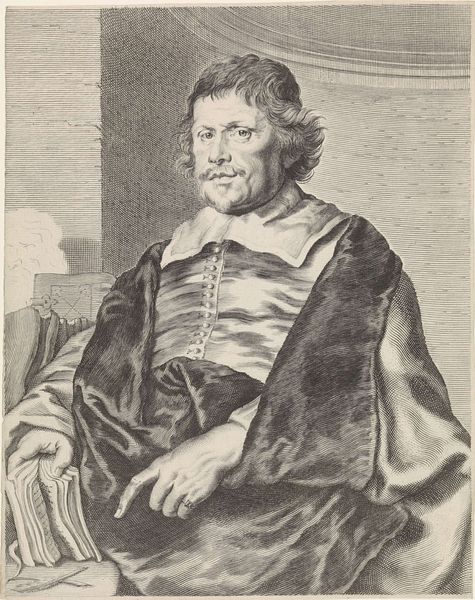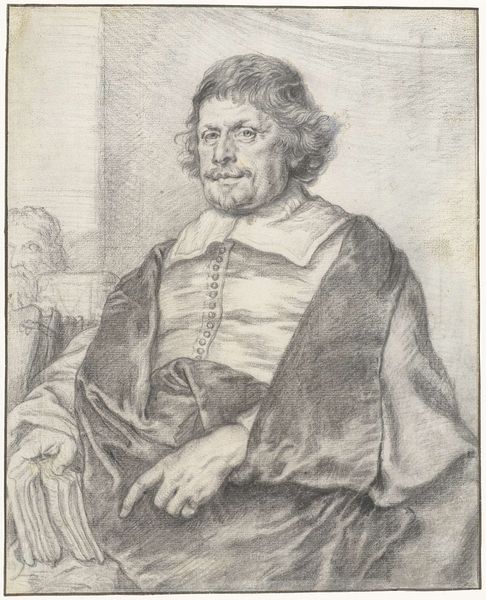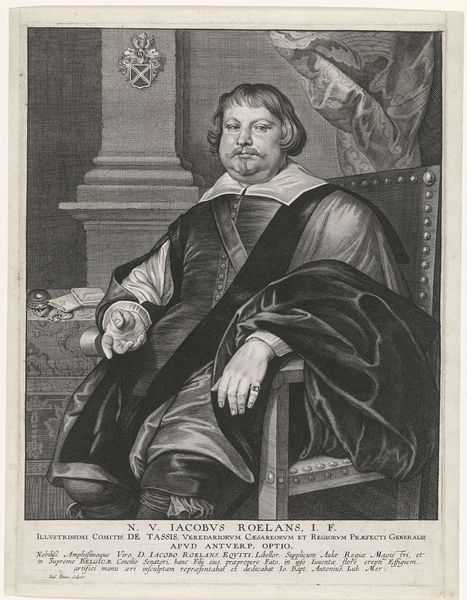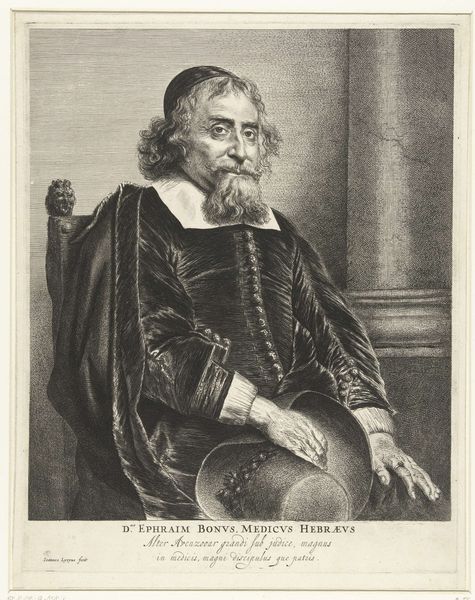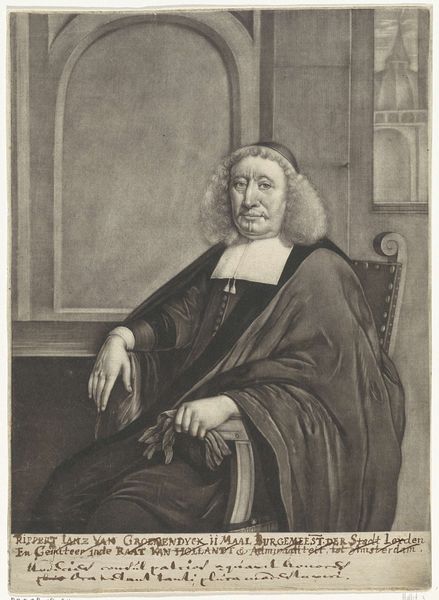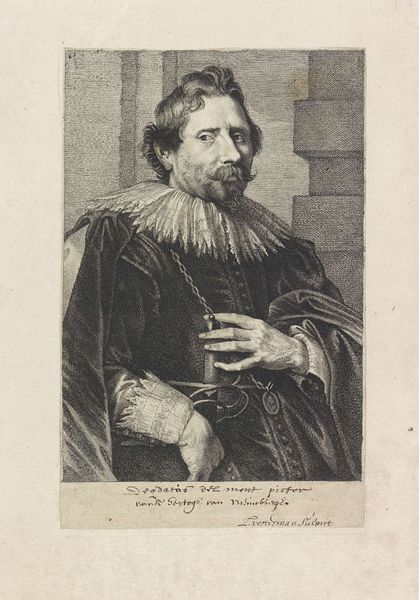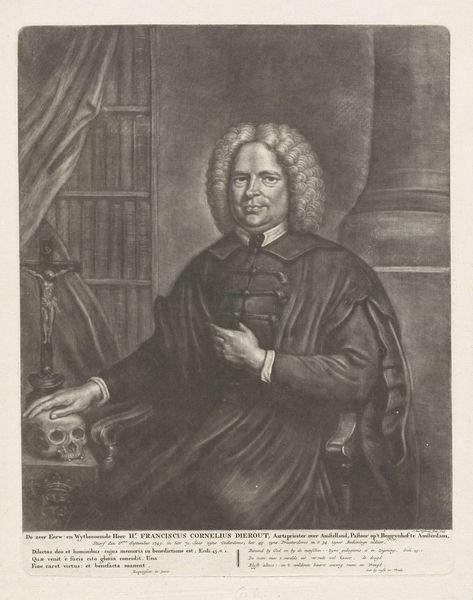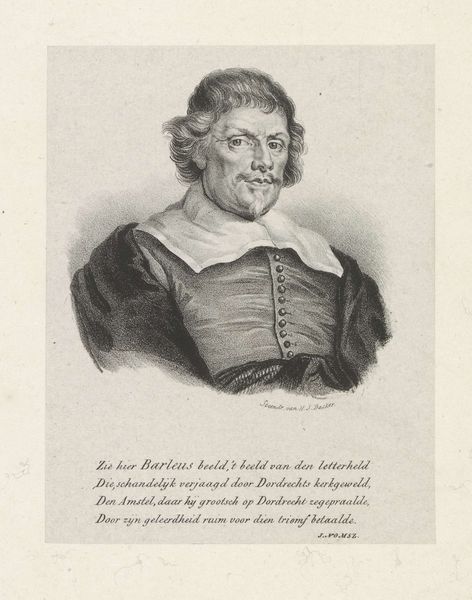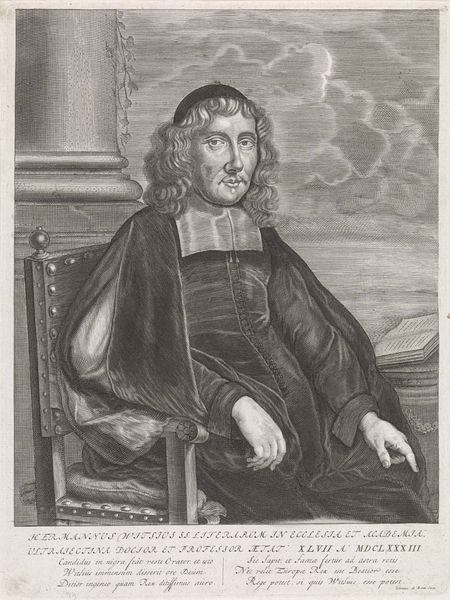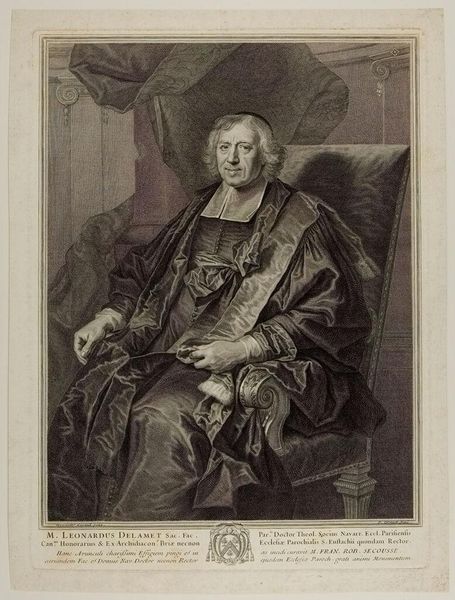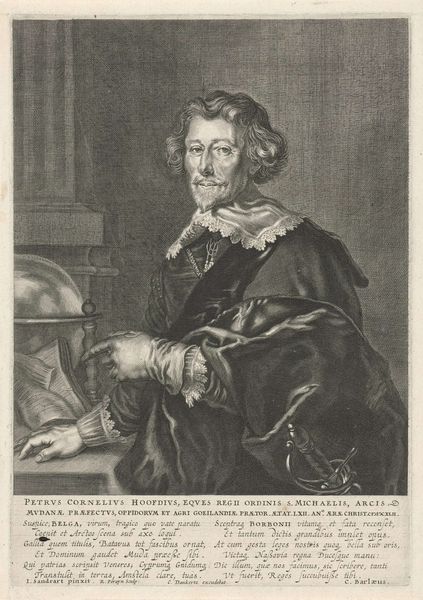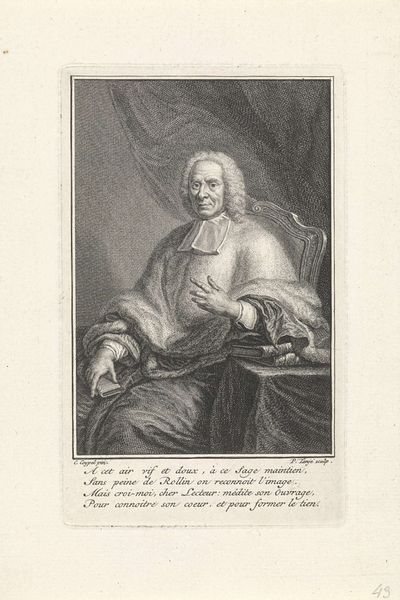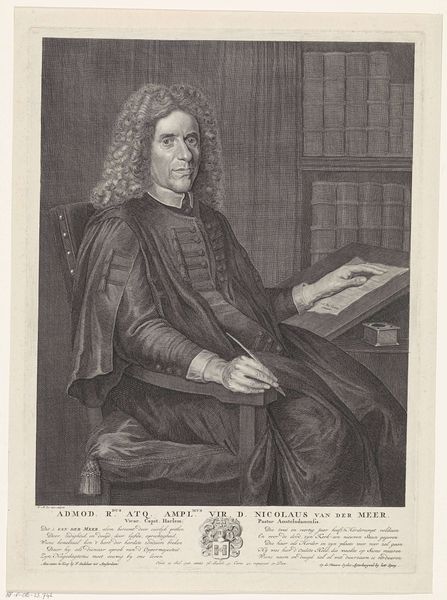
engraving
#
baroque
#
dutch-golden-age
#
old engraving style
#
engraving
Dimensions: height 280 mm, width 200 mm
Copyright: Rijks Museum: Open Domain
Curator: Here we have an engraving titled "Portret van Caspar van Baerle," a Dutch Golden Age piece housed in the Rijksmuseum, dating somewhere between 1631 and 1676. Theodor Matham is credited with its creation. Editor: My initial impression is one of academic authority. There’s a somberness, even austerity, in the subject's gaze and the muted tones. It almost feels like a classical sculpture brought to life through printmaking. Curator: It's intriguing to consider this portrait as an engraving; the artist painstakingly carved into a metal plate to create these lines. The physical labor and technical skill are evident in every carefully rendered shadow and highlight. We should not that engravers often transferred painting’s designs. Editor: The figure in the background certainly reinforces that sense of historical and intellectual weight. He appears to be some kind of philosopher. Caspar van Baerle, the subject, clearly positions himself within that classical tradition, even gesturing towards us, as if passing on the importance of learning. Curator: That gesture, you're right, is very deliberate. The positioning of the hand and the subtle rendering of the fingers draws attention to the act of communication, of imparting knowledge but I can´t see clear details on the robe. How luxurious was that textile at the time?. Editor: Absolutely, but let’s not overlook the symbolic power of the book he is holding and the fact that there’s also an old man that reinforces the intellectual status of our character.. The light illuminating his face further emphasizes his wisdom and his status in society. These are tools of persuasion and remembrance, cementing his legacy as a prominent scholar and poet. Curator: This engraving allows us a unique glimpse into the intellectual life of 17th-century Amsterdam and the way printed media was being used for image-making. By meticulously cutting the metal, Theodor Matham crafted something that both reflected and influenced social perceptions. Editor: Yes, I agree. And by utilizing iconography of past philosophers Matham evokes these characters and at the same time links Caspar van Baerle with this tradition for future viewers. Curator: So, when we view the engraving through this lens, considering its social roots, labor process, and materiality it goes beyond a simple portrait of a single person. Editor: Precisely. The symbols create continuity between centuries to offer us an intimate view of Dutch intellectuality during the Golden Age.
Comments
No comments
Be the first to comment and join the conversation on the ultimate creative platform.
